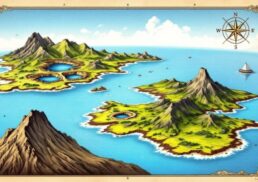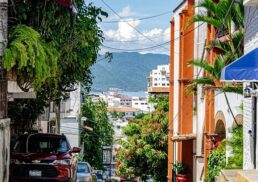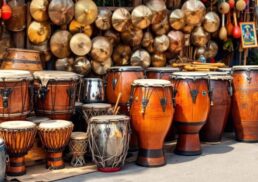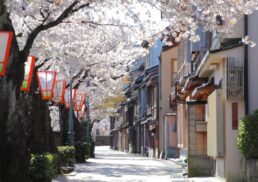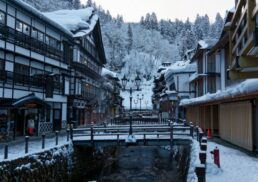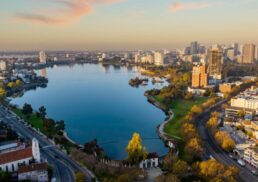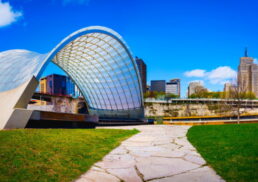Okinawans are famous for their rich culture, unique history, and remarkable longevity. This article explores their traditions, historical background, and the factors contributing to their long, healthy lives.
Table of Contents
Key Takeaways
Okinawa boasts a rich cultural identity and history, tracing back to the Ryukyu Kingdom, which influences its modern societal values despite the pressures of cultural assimilation.
The longevity of Okinawans is attributed to a unique diet, active lifestyle, strong social networks, and traditional practices, making the region recognized as a ‘Blue Zone’.
Okinawa faces contemporary challenges such as economic inequalities, tourism-related cultural dilution, and the threat to its linguistic heritage, necessitating a balance between development and cultural preservation.
The Land of Okinawa Prefecture

Okinawa Prefecture covers an area of approximately 2,276 square kilometers (878.8 square miles). This chain of islands, located in the southwestern part of Japan, stretches from Kyushu to Taiwan and is known for its strategic location and historical significance. The prefecture includes 160 islands, with the main island of Okinawa being the largest and most populous. Despite its relatively small size, Okinawa has played a significant role in the history of the region, serving as a cultural and economic bridge between Japan, China, and Southeast Asia. The island’s unique position has made it a focal point for trade, cultural exchange, and, unfortunately, conflict throughout history.
Many Okinawans can trace their heritage back to the ancient Ryukyu Kingdom, which thrived from 1429 until it was annexed by the Japanese government in 1879. During its peak, the Ryukyu Kingdom established extensive trade relations with both China and Japan, as well as other Southeast Asian countries. This period of prosperity left a lasting impact on the cultural and architectural landscape of Okinawa, which still bears traces of Chinese, Japanese, and Korean influences.
However, the annexation by the Meiji government marked the beginning of a period of cultural assimilation and suppression, as the Japanese authorities sought to integrate Okinawa more fully into Japanese society. Despite these efforts, many Okinawans have managed to preserve their unique cultural identity, which continues to thrive alongside modern Japanese culture.
Subtropical Climate and Seasons
Okinawa’s subtropical climate sets it apart from the rest of Japan, providing warm temperatures year-round. The average temperature hovers around 72°F, making it a haven for those who enjoy mild winters and hot, humid summers. This climate has a profound impact on the daily lives of Okinawans, influencing everything from their agricultural practices to their recreational activities. The region’s warm weather allows for the cultivation of a variety of crops, including the famous purple sweet potatoes, which are a staple of the Okinawan diet.
The rainy season, which typically occurs from May to June, brings intense rainfall and high humidity, with average humidity levels exceeding 80%. This period of heavy rain greatly benefits the island’s agriculture by replenishing water supplies and promoting crop growth.
Despite the occasional typhoon, which can bring destructive winds and flooding, the overall climate remains relatively stable. Winter temperatures rarely drop below 10°C, providing a stark contrast to the colder climates of mainland Japan and making Okinawa an attractive destination for tourists seeking a milder winter experience.
This unique climate not only shapes the natural landscape of Okinawa but also plays a significant role in the cultural and social practices of its people.
Unique Cultural Traditions

Okinawa’s cultural traditions are a fascinating blend of influences from China, Japan, and Southeast Asia, reflecting the island’s historical role as a hub of trade and cultural exchange. This unique blend is evident in many aspects of Okinawan life, from its festivals and music to its architecture and cuisine. For instance, the traditional Okinawan drink, awamori, is made from indica rice that was originally imported from Thailand, showcasing the island’s connections with Southeast Asia.
Similarly, the sanshin, a traditional three-stringed instrument, embodies the musical heritage of both China and Japan, creating a sound that is distinctly Okinawan. The architectural landscape of Okinawa also reflects this cultural amalgamation, with features that include red roof tiles reminiscent of Chinese and Korean styles.
Despite modernization and cultural assimilation pressures, these cultural elements have been preserved and passed down through generations. Many Okinawans continue to honor their ancestors and cultural heritage through festivals and rituals, maintaining a sense of identity and continuity with the past. This rich tapestry of customs and traditions not only defines Okinawan culture but also contributes to the island’s appeal as a unique and vibrant destination within Japanese society.
Population and Lifestyle
Okinawa is home to more than 1.4 million people, making it one of the most densely populated areas in Japan, with over 1,014 people per square kilometer. The majority of the population lives in urban areas, where they enjoy a vibrant cultural scene marked by numerous festivals and events throughout the year. These celebrations not only provide entertainment but also serve as important occasions for community bonding and the preservation of cultural traditions. The high population density contributes to a lively social atmosphere, where people of all ages come together to celebrate and uphold their heritage.
The economic structure of Okinawa is heavily reliant on tourism and the presence of U.S. military bases. While tourism brings significant revenue to the island, it also presents challenges in terms of maintaining the authenticity of cultural practices. The U.S. military presence, which dates back to the post-World War II era, has had a profound impact on the local economy and lifestyle.
While many Okinawans acknowledge the economic benefits of the military bases, there are also concerns regarding safety and cultural erosion. Despite these challenges, the Okinawan lifestyle remains deeply rooted in traditions and community values, with younger generations continuing to show interest in their cultural heritage.
Celebrating New Year in Okinawa
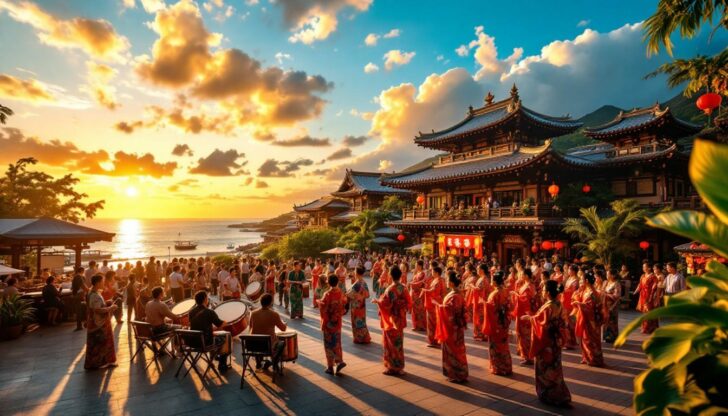
New Year is a significant holiday in Okinawa, much like in other regions of Japan, but with its own unique customs. In the days leading up to the New Year, many Okinawans decorate their homes with kadomatsu and shimekazari, using materials like pine and rice straw to ward off evil spirits and welcome good fortune. Another important tradition is ‘o-souji’, a thorough cleaning of homes to start the new year with a fresh slate. These practices embody a deep respect for tradition and a desire to honor the past while looking forward to the future.
The New Year’s Eve celebrations involve gathering with family and friends to enjoy special foods, games, and popular television shows. At the stroke of midnight, it is customary for Okinawans to visit shrines or temples to give thanks and pray for prosperity in the coming year.
The first sunrise of the new year, known as hatsuhinode, is greeted with early morning gatherings at mountaintops and beaches, symbolizing new beginnings and hope.
On New Year’s Day, shopping for fukubukuro, or ‘lucky bags’ filled with surprise items at discounted prices, is a popular activity that adds an element of excitement and anticipation to the celebrations. These traditions highlight the importance of family, community, and optimism in Okinawan culture.
Ancestor Worship: Shiimii Festival
Ancestor worship is a cornerstone of Okinawan culture, and the Shiimii Festival is a prime example of this tradition. Celebrated on the Sunday closest to the 15th day of the third lunar month, Shiimii is a time for families to honor their ancestors with offerings and feasts. During the festival, families gather at ancestral tombs to sweep and clean them, offering favorite foods and drinks, including the local spirit awamori. The rising smoke from burning incense is believed to signal the ancestors’ acceptance of these offerings, creating a spiritual connection between the living and the deceased.
Shiimii emphasizes a lively and personal relationship with ancestors, viewing them as guardian deities who continue to watch over and protect their descendants. This festival is not just a solemn occasion but a celebration of life and continuity, where families come together to remember and honor those who came before them.
Shiimii exemplifies the deep respect for ancestors in Okinawan culture, reinforcing family unity and reverence for the past.
Irei no Hi: Remembering WWII

Irei no Hi, observed annually on June 23, is a poignant day of remembrance in Okinawa, dedicated to honoring those who lost their lives during the Battle of Okinawa in World War II. This date marks the end of one of the bloodiest battles in the Pacific, which resulted in over 240,000 casualties, including a significant number of local Okinawans. The battle left an indelible mark on the island’s history and its people’s collective memory.
On Irei no Hi, people gather at Peace Memorial Park to pay their respects and honor the spirits of the fallen. The Cornerstone of Peace, a prominent memorial within the park, lists the names of more than 240,000 victims of the battle, serving as a somber reminder of the human cost of war.
This day is not just for mourning but also for reflecting on the resilience and strength of the Okinawan people, who have rebuilt their lives and communities after such profound loss.
Obon Festival: Honoring Ancestors
The Obon Festival, held from July 13-16 on the lunar calendar, is another significant event in Okinawan culture, dedicated to honoring ancestors. This Buddhist festival involves various activities, including offerings at family altars, family reunions, and the performance of eisa dances. The eisa dance, characterized by drumming and vibrant costumes, is a powerful cultural expression that honors the spirits of ancestors and brings the community together in celebration.
Respect for elders and ancestral care are vital components of Okinawan culture, contributing to the community’s longevity and social cohesion. The Obon Festival serves as a reminder of the enduring bonds between the living and the deceased, reinforcing the values of respect, gratitude, and familial duty.
These traditions keep the legacy of ancestors as an integral part of Okinawan life, fostering continuity and belonging.
Historical Context: From Ryukyu Kingdom to Japanese Control
The Ryukyu Kingdom, with roots dating back thousands of years, has a rich cultural identity shaped by its complex and turbulent history. The earliest inhabitants, known as the Minatogawa people, lived in Okinawa around 22,000 years ago, leaving behind evidence of their existence in the form of ancient remains. The Ryukyu Kingdom was officially unified in 1429, and for over 400 years, it flourished as a center of trade and cultural exchange with Japan, China, and Southeast Asia.
However, this period of prosperity came to an end in 1879 when the Japanese government annexed the Ryukyu Kingdom, incorporating it into the newly established Okinawa Prefecture. This annexation was part of Japan’s broader campaign to consolidate its control over the region during the Meiji era.
The former kingdom faced policies aimed at assimilation into Japanese culture, leading to significant disruptions in its unique cultural identity. Despite these challenges, many Okinawans have preserved their distinct cultural heritage, which remains a source of pride and identity today, alongside various ethnic groups.
The Impact of WWII on Okinawa
World War II had a profound impact on Okinawa, with the Battle of Okinawa being one of the most devastating events in the island’s history. The battle resulted in over 240,000 casualties, including approximately 150,000 civilians. The aftermath of the battle left the island in ruins, with many Okinawans losing their homes and loved ones. The Cornerstone of Peace, a memorial listing the names of all the victims, serves as a poignant reminder of the human cost of the conflict.
The legacy of World War II continues to influence Okinawan identity and socio-economic conditions. The presence of U.S. military bases, established during the post-war occupation, remains a contentious issue for many Okinawans. While these bases provide economic benefits, they also bring challenges related to safety and cultural preservation.
The war experiences and subsequent American influence have left an indelible mark on Okinawan society, shaping its contemporary identity and outlook.
Learn more, Okinawa: The Costs of Victory in the Last Battle.
Post-War Recovery and Challenges
The post-war recovery period in Okinawa was marked by significant challenges and changes. Following the devastation of World War II, Okinawa was placed under U.S. military occupation, which lasted until 1972. During this time, the island became home to approximately 70% of all U.S. military facilities in Japan, despite representing only a small fraction of the country’s land area. This concentration of military bases has had a profound impact on the local economy and society.
Poll data shows that many Okinawans view the U.S. bases as burdensome, with concerns about safety and crime involving service members. Meanwhile, younger Okinawans are divided, with some supporting the military presence due to regional security threats.
The ongoing geopolitical dynamics between the U.S., Japan, and China continue to influence Okinawa’s security and political landscape. The return of Okinawa to Japanese control in 1972 marked a new chapter in its history, but the legacy of the post-war occupation persists.
Language and Identity
Language plays a crucial role in the cultural identity of Okinawans, yet the Okinawan language is currently designated as severely endangered by UNESCO. Revitalization efforts face numerous challenges, including the lack of formal education and support in schools. Historically, Okinawan was the official language of the Ryukyu Kingdom, particularly the Shuri-Naha variant, from 1477 to 1526. However, after the Meiji Restoration, the Japanese government enforced policies that suppressed the use of Okinawan in favor of Standard Japanese. The Ryukyuan language is at risk of disappearing without adequate support.
Despite being classified as a dialect in Japan, many scholars outside Japan consider Okinawan a separate language due to its distinct grammatical features and lexical differences. The Okinawan language has around 39% lexical similarity to Japanese, highlighting its uniqueness. Historically, it was written using a mix of hiragana and kanji, with a preference for hiragana in local literature. These unique characteristics differentiate it from Modern Japanese and underscore its cultural significance.
Today, many Okinawans primarily speak Okinawan Japanese, a hybrid influenced by various historical factors. This shift reflects the broader changes in Okinawan society and the ongoing struggle to preserve its linguistic heritage.
Efforts to revive the Okinawan language continue, but substantial support and recognition are needed to preserve this crucial aspect of Okinawan identity and the endangered languages.
Longevity and Health Practices
Okinawa is renowned for the longevity of its residents, a phenomenon attributed to a combination of diet, lifestyle, and social practices. The Okinawan diet, prominently featuring purple sweet potatoes, is believed to play a significant role in the longevity of its people. This diet is associated with lower rates of cancer, heart disease, and dementia compared to populations in the United States. Okinawa is recognized as a ‘Blue Zone’, where the proportion of centenarians is significantly higher than in other regions.
A sense of purpose, known as ‘ikigai’, is another critical factor contributing to the longevity of Okinawans. Many older Okinawans engage in daily activities such as walking and gardening, which provide both physical exercise and stress relief. Gardening, in particular, is a common activity among centenarians, offering a way to stay active and connected to nature.
Strong social connections and an optimistic attitude are also characteristic of Okinawan centenarians. The concept of ‘moai’, a supportive social group, provides emotional and financial assistance, fostering a sense of community and belonging. These elements of the Okinawan lifestyle collectively contribute to the remarkable health and longevity of its people.
Traditional Diet and Nutrition
The traditional Okinawan diet is predominantly plant-based, consisting of stir-fried vegetables, sweet potatoes, and tofu. This diet is low in calories and fat, with a macronutrient breakdown of approximately 85% carbohydrates, 9% protein, and 6% fat. The primary source of calories is sweet potatoes, which are resilient in local growing conditions and rich in antioxidants that contribute to lower incidences of chronic diseases.
Okinawans consume very little meat and processed foods, focusing instead on soy products like tofu and miso, which are beneficial for heart health and cancer prevention.
A key practice is ‘hara hachi bu,’ which translates to eating until 80% full, promoting moderation and portion control. This dietary approach, combined with the consumption of medicinal plants such as ginger and turmeric, supports overall health and longevity.
Martial Arts Heritage
Okinawa is the birthplace of karate, a martial art that has gained worldwide recognition and popularity. Historically, the practice of karate was kept secret for self-defense due to weapon bans in Okinawa starting in 1507. Today, there are over 75 distinct styles of karate, each with unique techniques and training methods, such as Goju-ryu and Shotokan-ryu. These styles reflect the rich cultural heritage and the emphasis on discipline and self-improvement that are central to martial arts.
Karate is not only a physical discipline but also promotes mental resilience, respect, and self-control among its practitioners. This martial art embodies the values of Okinawan culture, emphasizing the importance of balance and harmony in both physical and mental aspects of life.
The global popularity of karate, especially after World War II, has spread Okinawan culture and philosophy worldwide, highlighting the island’s enduring influence.
Modern Challenges and Future Prospects
In recent years, Okinawa has faced numerous challenges as it grapples with economic inequalities and the pressures of modernization. Tourism, while providing economic benefits, also risks diluting authentic cultural practices. The discourse surrounding cultural heritage in Japan has evolved, impacting Okinawa’s strategies for cultural preservation amidst these changes. Efforts to promote local heritage as a resource for economic development often clash with the goal of maintaining genuine cultural authenticity.
Modern shifts toward a more Westernized diet are believed to negatively impact the historical health benefits and longevity associated with the traditional Okinawan diet. Despite these challenges, there are ongoing efforts to preserve Okinawa’s unique cultural heritage, such as the promotion of traditional dance forms like Kumiodori.
Okinawa’s future depends on balancing economic development with preserving its rich cultural identity, ensuring the island’s unique heritage continues to thrive for generations.
Summary
Okinawa’s rich history, unique cultural traditions, and remarkable longevity offer a fascinating glimpse into a community that has weathered numerous challenges with resilience and grace. From the ancient Ryukyu Kingdom to the modern-day prefecture, Okinawa’s journey is one of cultural preservation and adaptation. The island’s subtropical climate, traditional diet, and strong sense of community all contribute to the health and well-being of its people. As Okinawa continues to navigate the complexities of modernization and economic development, it remains a testament to the enduring spirit of its inhabitants. The lessons from Okinawa’s past and present provide valuable insights into the importance of cultural identity, community, and a balanced lifestyle.
Frequently Asked Questions
How does Okinawa’s climate impact its culture?** **?
Okinawa’s subtropical climate fosters a lifestyle centered around outdoor activities and community gatherings, influencing local customs and agricultural practices. This climate not only shapes the island’s food culture but also promotes a strong sense of community and outdoor living.
What are the unique aspects of Okinawan New Year celebrations?** **?
Okinawan New Year celebrations are distinct for their unique decorations like kadomatsu and shimekazari, thorough house cleaning, and communal activities, including family gatherings and shrine visits at midnight. These practices emphasize both spiritual renewal and family connections.
How has WWII influenced Okinawan identity?** **?
WWII has significantly shaped Okinawan identity, as the devastating Battle of Okinawa brought immense loss and hardship. The enduring U.S. military presence since the war has further influenced the region’s socio-economic landscape and cultural identity.
What makes the Okinawan diet special?** **?
The Okinawan diet is special due to its emphasis on a plant-based, low-calorie, and low-fat intake, highlighting foods like sweet potatoes and vegetables. The practice of ‘hara hachi bu,’ which encourages eating until only 80% full, further enhances its role in promoting health and longevity.
Why is karate important in Okinawan culture?** **?
Karate is crucial in Okinawan culture as it embodies the principles of discipline, respect, and self-control, reflecting the island’s values of balance and harmony. Additionally, it serves as a vehicle for promoting Okinawan culture globally.
